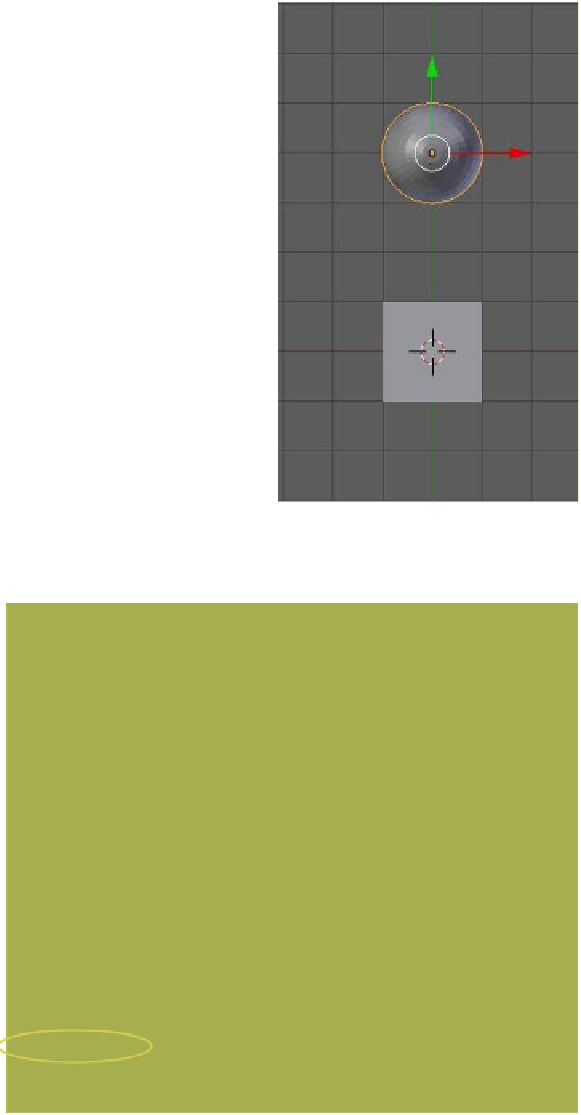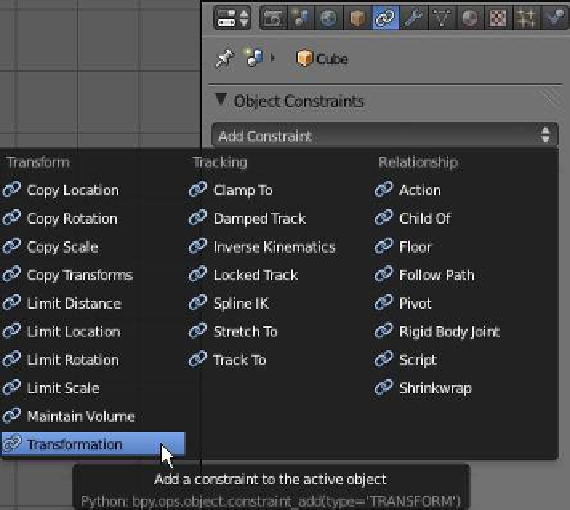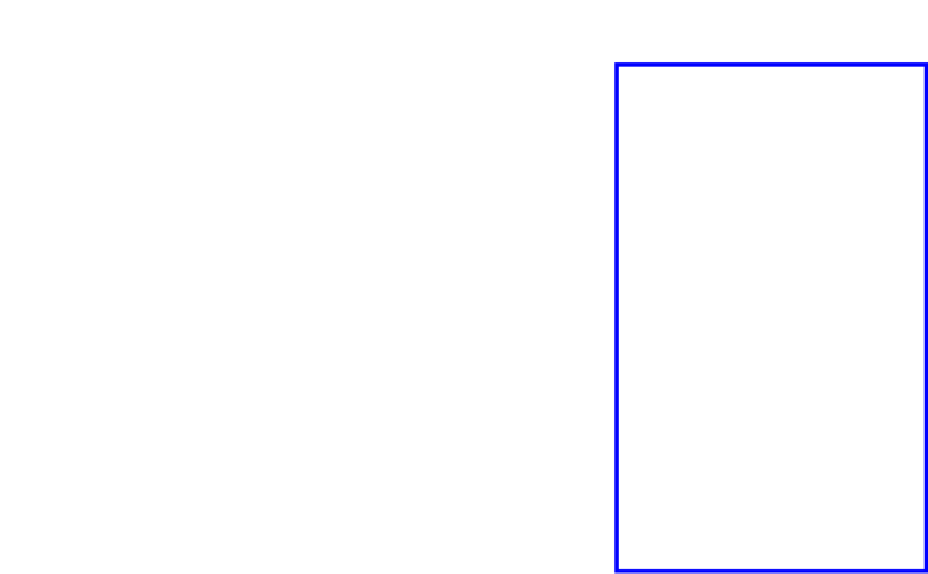Graphics Programs Reference
In-Depth Information
•
Limit Rotation.
Constrains an object's rotation about a specific
axis between limits.
•
Limit Scale.
Constrains the scale of an object between limits on
a specified axis.
•
Maintain Volume.
Constrains the dimensions of a side on a
specified axis.
•
Transformation.
See Section 14.3.1.
Figure 14.7
14.3.1 The Transformation Constraint
The transformation constraint allows you to control the location, rota-
tion, and scale of an object or part of an object by adjusting the loca-
tion, rotation, or scale of another object. The object to be controlled
is termed the “source” and has the constraint applied to it while the
other object (the controlling object) is termed the “target object.” The
transformation constraint is more complex and versatile than the oth-
er transform constraints. The location, rotation, or scale of the target
object can be set to affect the location, rotation, or scale of the source
object with the constraint applied. The location, rotation, or scale val-
ues in either case can be set to operate within a specific range.
To demonstrate this constraint, add a UV sphere to the default scene
and move it four Blender units along the
y
-axis (Figure 14.7). Place the
3D window in top orthographic view (number pad 7 - number pad 5).
Select the cube and go to the properties window - “Object Constraints” button, click “Add
Constraint,” and select “Transformation” from the drop down menu (Figure 14.8). In the con-
straint panel, set the values as shown in
Figure 14.9. The location of the source
(in this case, the UV sphere) is set to
operate on the
x
-axis between 0.000
and 2.000 Blender units. Note that the
x
-axis of the source is set to affect the
z
-
axis of the destination. The destination
(the cube) will rotate about the
z
-axis
from 0.000 to 60.000 degrees.
By translating the sphere along
the
x
-axis between 0.000 and 2.000
Blender units, the cube rotates about
the
z
-axis between 0.000 and 60.000
degrees (Figure 14.10). The control
transformation of the sphere and the
rotation of the cube only takes effect
within the set limits. By adding ad-
ditional transformation constraints
and setting different parameters such
as the scale of the sphere to affect the
Figure 14.8






